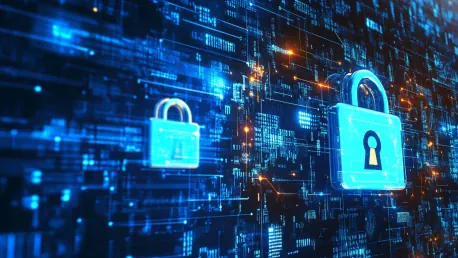Critical infrastructure (CNI) is increasingly under threat from sophisticated cyberattacks, as exemplified by recent incidents involving state-sponsored threat actors. This environment presents complex challenges for cybersecurity professionals who must safeguard these essential systems from potential disruptions. Attackers go beyond just causing immediate damage; they aim for long-term geostrategic advantages, making these attacks more complex and prolonged. As such, the strategies and technologies used to protect these systems must continue to evolve and adapt to meet these growing threats.
The State of Cyber Threats to Critical Infrastructure
Cyberattacks on operational technology (OT) environments and industrial control systems (ICS) have been growing in sophistication. The attacks are not limited to service disruptions; threat actors, often state-sponsored, are looking to gain strategic advantages, making these intrusions more intricate and prolonged. As OT systems become more integrated with IT systems, the attack surface expands, creating more opportunities for cyber adversaries. This integration requires a multifaceted defense strategy that incorporates both IT and OT considerations and emphasizes the need for proactive incident detection and robust cyber defenses.
Security leaders must prioritize the detection and halting of threat proliferation within these networks. They must move away from a static defense approach to a more dynamic one, where potential threats are identified and neutralized before causing significant damage. Investing in technology that enables real-time threat detection and response is crucial. Implementing AI and machine learning capabilities can help in predicting and mitigating these threats, thereby protecting the integrity of critical infrastructure. Regular updates and timely patch management are also essential to defend against new and emerging threats effectively.
The Impact of Legacy Systems on Cybersecurity
One of the primary challenges in protecting critical infrastructure lies in the long lifespan of the devices used in these systems. These legacy systems, while reliable, often do not keep pace with evolving cybersecurity threats, which leaves them vulnerable. For example, what was once considered best practice can become outdated as new and more sophisticated attacks surface. This discrepancy gives attackers an opportunity to exploit these outdated systems, making them and the infrastructure they support prime targets for cyber intrusions.
Additionally, the emphasis on uptime and service availability by critical infrastructure providers can be a double-edged sword. Attackers understand that these systems prioritize continuous operation, allowing them the luxury of planning targeted attacks over an extended period. This exploitation of uptime-centric operations demands a shift in how security is approached. Ensuring timely security updates, employing rigorous cyber hygiene practices, and implementing advanced monitoring solutions become essential steps in mitigating the risks posed by these legacy systems. Regular training and awareness programs for employees can also help in maintaining a vigilant organizational culture toward potential threats.
AI and Its Dual Role in Cybersecurity
Artificial Intelligence (AI)-based capabilities are reshaping both offensive and defensive cybersecurity strategies. The deployment of AI by advanced threat actors has complicated the threat landscape, accentuating the need for AI-centered defensive measures. Over the past year, there has been a significant rise in targeted attacks on critical national infrastructure, driven by heightened national security concerns and the tactical advantages they offer. AI-based cybersecurity solutions can analyze vast amounts of data to identify and predict potential threat patterns, helping organizations stay one step ahead of attackers.
While AI enhances the capabilities of threat actors, it is also a formidable tool for defenders. Organizations are increasingly relying on AI to automate threat detection and response processes, significantly reducing the time it takes to identify and mitigate attacks. AI-driven analytics provide deep insights into network behavior, enabling the identification of anomalies that could signify a cyber intrusion. By leveraging AI, organizations can develop a more proactive security posture, moving from reactive measures to predictive and adaptive defenses that can outpace evolving threats.
Enhancing Collaboration Between IT and OT Teams
As OT systems become more integrated with IT environments, their security vulnerabilities increase, necessitating enhanced collaboration between IT and OT teams. In many instances, OT systems were designed without considering cybersecurity, often leaving gaps that can be exploited by attackers once these systems are connected to broader IT networks. This increasing interconnectedness highlights the need for a unified security strategy that encompasses both IT and OT components to safeguard the entire network comprehensively.
Ensuring robust IT security support for OT systems is crucial to build a more resilient defense against cyber threats. Seamless coordination between IT and OT teams can lead to improved threat intelligence sharing and a unified response to potential intrusions. Implementing best practices for network isolation, restricted access, and rigorous cybersecurity protocols can further strengthen these defenses. Regular joint training exercises and simulations can also help foster better communication and understanding between these teams, ensuring a more coordinated and effective response to threats.
The Role of Good Cyber Hygiene and Proactive Measures
Adopting good cyber hygiene practices is essential for securing critical digital assets against malicious intent. This includes regular software updates, timely patch management, and comprehensive security assessments to identify and address potential vulnerabilities before they are exploited. Proactive measures such as these can significantly reduce the risks posed by opportunistic threat actors who often target poorly maintained systems. By maintaining a proactive stance, organizations can build a resilient infrastructure capable of withstanding sophisticated cyberattacks.
In addition to technical measures, organizations should foster a culture of security awareness among their employees. Regular training and updates on the latest cybersecurity trends and threat vectors can help in maintaining vigilance. Encouraging employees to report suspicious activities and potential security gaps can aid in early detection and response to threats. Overall, good cyber hygiene and proactive measures are foundational to a robust cybersecurity strategy, ensuring that critical national infrastructure remains protected against an ever-evolving threat landscape.
Safeguarding Intellectual Property and System Knowledge
Intrusions into OT networks are not just about immediate disruptions; they also involve the potential theft of intellectual property, system configurations, and supply chain information. These types of data breaches can have significant long-term implications for critical infrastructure providers, including operational disruptions, loss of competitive advantages, and regulatory implications. Protecting this data is crucial to maintaining the integrity and competitive edge of these organizations. Strategic measures should focus on isolating sensitive data from business networks and ensuring that access to this data is highly restricted.
Implementing advanced data encryption and multi-factor authentication can help safeguard intellectual property and other sensitive information from cyber adversaries. Furthermore, regular security audits and assessments should be conducted to ensure that data protection measures are effective and up-to-date. These audits can help identify potential weaknesses and areas for improvement, allowing organizations to enhance their security posture continuously. By prioritizing the protection of intellectual property and system knowledge, critical infrastructure providers can better defend against the diverse and sophisticated tactics employed by cyber threat actors.
The Growing Threat Landscape and the Importance of Preparedness
Critical infrastructure is increasingly at risk from sophisticated cyberattacks, evidenced by recent incidents involving state-sponsored threat actors. This environment creates complex challenges for cybersecurity professionals tasked with protecting these crucial systems from potential disruptions. Attackers aim for more than just immediate damage; their goal is often to achieve long-term geostrategic advantages. These advanced and prolonged attacks necessitate that the strategies and technologies used to safeguard our critical infrastructure continually evolve and adapt. New methods and tools need to be developed and implemented to stay ahead of these growing threats, ensuring that essential systems remain secure. This means not only fortifying existing defenses but also anticipating future forms of cyber threats, which are becoming more intricate over time. Therefore, cybersecurity measures must be both robust and flexible, capable of adapting to the ever-changing landscape of cyber threats that target our critical infrastructure, ensuring its protection against both current and future challenges.









